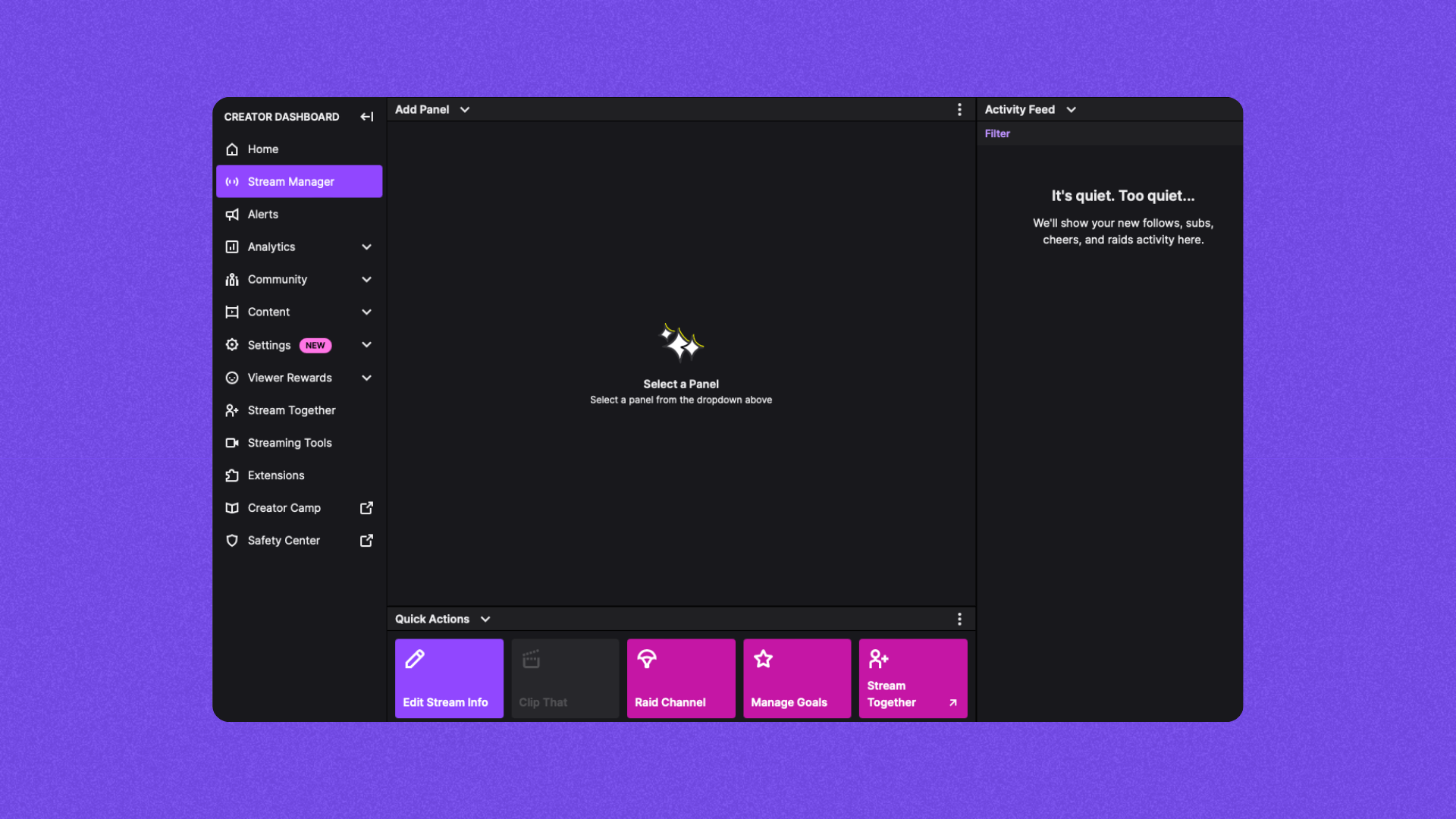Private Twitch Stream: How & Why To Set Up a Private Stream

I bet you're interested in setting up a private Twitch stream. Why else would you be here?
What is a Private Twitch Stream?
A private Twitch stream is an exclusive stream where you restrict access to a certain audience, such as your friends.
It may seem counterintuitive to set up a private stream since most people want to be discovered and share their broadcast. But there are a couple reasons why you'd like to set up a private stream.
- You want to test your connection and set up
- You only want to stream in front of your friends, in peace
Private Stream for Testing Your Connection and Setup
Maybe you just upgraded your streaming gear and you’re curious if your new microphone makes you sound like a podcasting wizard. Or maybe you’ve tweaked your OBS settings, and you’re curious if your viewers will notice the difference.
Instead of going live to the whole world, you can set up a private stream to check if everything’s shipshape. It’s like rehearsing your lines backstage before the big show—minus the stage fright.
Private Stream for Friends
Sometimes, you want to share your gaming escapades or creative endeavors with a select group of buddies. Maybe you’re practicing your speedruns, or perhaps you’re hosting a cozy game night with friends, complete with inside jokes and questionable dance moves.
Whatever the reason, a private stream lets you keep it intimate and personal.
How to Set Up a Private Twitch Stream
Here’s how you can set up a private stream for either instance.
How to Set Up a Private Stream for Testing
Twitch Inspector helps you diagnose issues with your broadcast.
Testing without going live. Here's what you'll find:
- Bitrate. Your bitrate is the amount of data you send to Twitch when you stream. A higher bitrate takes up more of your available internet bandwidth. Increasing your bitrate can improve your video quality, but only up to a certain point.
- Frame Rate (FPS). Frame rate refers to how often animation frames are sent to Twitch.
- Video Resolution. The resolution shown here is the final resolution sent to Twitch. While it is possible to stream in other aspect ratios/resolutions, most viewing devices and streaming programs best support an aspect ratio of 16:9.
- Configuration Check. If you're green, you're good to go. If you're red, follow the remediation steps.
- Audio / Video Codec. Codecs work to compress and decompress your audio and video for streaming.
- AVC Level. Advanced Video Coding is an advanced setting within most streaming software.
- Delay. A delay can be added for a variety of reasons. Check out our stream delay post for more information.
- Encoder. This is the streaming software that sends your stream to Twitch.
How to Set Up a Private Stream for Family/Friends
Unfortunately, Twitch doesn't have a "private" stream option where you're hidden from viewers. Instead, you'll have to be a little sneaky.
- Log in to Twitch. Easy enough.
- Create a New Stream. Creator Dashboard > Stream Manager > Edit Stream Info.
- Don't add any meta data. Don't select a category, tags, or any type of content that can get you discovered.
- Go Live: You won't be invisible, but it's as close as one can get to being private.
If you have a Twitch account with a lot of followers, then you need to create a new Twitch account. Follow the process above and share your link with friends.
Consider Other Platforms for Private Streaming
While Twitch may be your home turf, there are other platforms that may be better suited for private streams with your friends. I highly recommend Discord.
Set Up a Private Stream on Discord
First, Create a Server. Before you dive into streaming, you’ll need a server. If you don’t have one yet, follow these steps:
- Open the Discord app.
- Click the + icon in the menu on the left.
- Select Create My Own from the popup menu.
Second, Invite Your Audience.Once your server is up and running, invite your friends, family, or chosen viewers to join. You can separate content within your server using different text and voice chat channels.
Third, Go Live! Now, let’s fire up that stream:
- Join a voice channel in your server where you have permissions to screen share.
- Tap on the Screen streaming icon in the voice status panel (near the bottom left corner).
- A new window will pop out.
- Select the individual app or game you want to stream.
And there you have it! Your private stream is ready to roll.
Conclusion
So there you have it, my fellow streamers! Whether you’re fine-tuning your setup, sharing laughs with friends, or hosting a subscriber-only soirée, private


